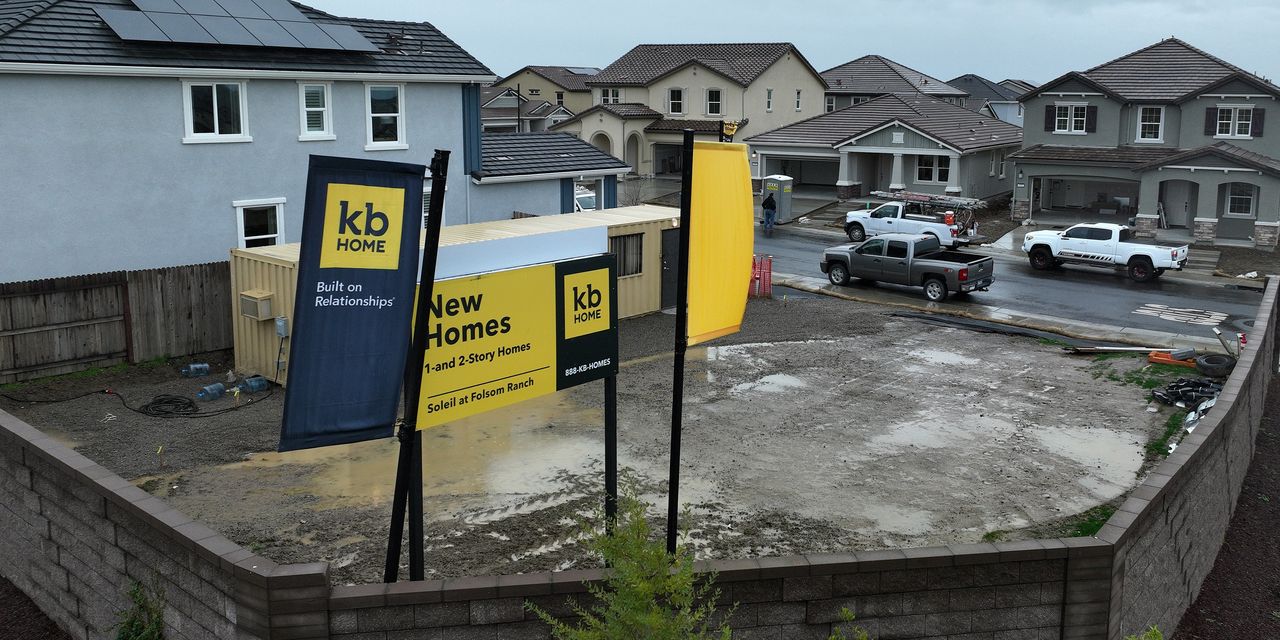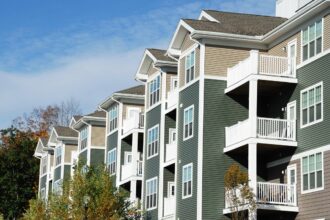Interest rates on 30-year fixed-rate mortgages have hit yet another high, with lenders offering loans above 8% for the first time since 2000. Mortgage rates have gone up rapidly this year, rising two full percentage points from lows near 6% back in February.
That’s been brutal for home buyers, who have watched their buying power erode. At a 6% interest rate, a buyer looking to spend $2,000 a month on principal and interest could afford a loan of roughly $333,500. With interest rates at 8%, that same buyer can afford only $272,500. Their target home price has dropped $61,000 as more of that monthly payment has to go toward servicing interest.
Here’s why mortgage interest rates are so high, and why they could remain elevated. Still, there are ways that home buyers can contend with such a challenging housing market.
Why mortgage rates climbed so high
A year ago, many housing economists, including in forecasts from Fannie Mae
FNMA,
and the Mortgage Bankers Association, were anticipating that today’s mortgage rates would be in the 5%-6% range. Though that seems wildly off base now, at the time it looked pretty reasonable.
“Last year around this time, the Fed was in the midst of hiking interest rates very rapidly,” explains Chen Zhao, head of economic research at Redfin
RDFN,
“And most economic forecasters were really looking at this and saying, OK, this is most likely going to lead to a recession.”
A recession could have forced the Federal Reserve to cut interest rates, with mortgage rates likely falling, too. But that recession hasn’t arrived.
“Despite what the Fed has done, hiking rates at the fastest rate ever, the economy, especially the job market, has really just remained very resilient. As a result, investors are now expecting that the economy is going to avoid a recession and remain very strong for longer,” Zhao says. “And that means that the economy can sustain higher mortgage rates for a longer amount of time.”
See: These are the most expensive ZIP Codes in the U.S. for house shoppers
Where are mortgage rates headed in 2024?
Looking at last year’s predictions for 2023, it’s clear that a lot can change in just a few months. With political upheaval in the U.S. and multiple wars overseas, there’s potential for tectonic shifts in markets and in economic policy.
“I would say that right now uncertainty is unusually high,” Zhao comments. “Maybe the most plausible forecast would be to say that rates are probably going to stay in this range for the near term or at least in the foreseeable future.” But Zhao also outlines scenarios for mortgage rates going lower — an economic downturn forcing the Federal Reserve to encourage economic activity by easing interest rates — or higher, if mortgage spreads remain elevated.
The mortgage spread is the difference between the 30-year fixed mortgage rate and 10-year Treasury rate. “Historically, the spread between the 10-year Treasury and the 30-year mortgage rates is about 1 3/4%,” explains Melissa Cohn, New York-based regional vice president and mortgage banker at William Raveis Mortgage. Because of economic and geopolitical volatility, “Those spreads have grown over the course of the past couple of years, and our mortgage rates are now trading at 3% or higher above the 10-year Treasury.”
That said, it’s also worth noting that while we haven’t seen mortgage interest rates this high in 23 years, prevailing interest rates are in line with longer-term historical averages. Interest rates collected by government-sponsored enterprise Freddie Mac
FMCC,
which go back to 1971, are widely used as the yardstick for mortgage interest rates. Over that half century, the average 30-year fixed interest rate has been 7.74%.
“Looking holistically at the entire history, we’re about where the average is,” comments Jessica Lautz, deputy chief economist and vice president of research for the National Association of Realtors. Lautz points out that recent history is fairly exceptional: “We don’t want to say that the interest rate of 18 is normal, but the interest rate of 2.5 is also not normal,” she says, referring to historic highs of the early 1980s and the low point of 2020. “Both of those were very unusual time periods for interest rates.”
Don’t miss: A century-old real-estate practice could soon end. Here’s how home sellers and buyers could be affected.
How high rates might affect buyers’ plans
Higher interest rates have got home buyers scrambling to keep their budgets in line with costs. But buyers should also consider the wider effects that rates have on the housing market and how these could play out.
Cohn contends that those who can afford to buy now, despite high interest rates, are likely better off going ahead with a purchase, as home prices continue to rise. “Are you better off buying in the higher-rate environment today and paying hundreds of dollars more a month in a mortgage payment so that you can refinance in a year when rates are down instead of having to pay 5% more on the purchase price of that home in a year?” she asks. This argument assumes interest rates will drop, but it’s also worth noting that while today’s buyer waits for rates to fall, they’re building equity.
Lautz also leans toward acting now if you can, but for different reasons. With housing inventory limited, a drop in interest rates could bring currently priced-out buyers off the sidelines, driving up home prices. “I do think there is pent-up demand,” Lautz explains, “and so they may be facing a multiple-offer situation.” In other words, lower rates could lead to the return of bidding wars.
Related: Some home sellers are offering to pay their buyers’ mortgages. What’s the catch with ‘seller financing’?
What home buyers can do now
If you’re in the position to buy a home despite today’s mortgage rates, there are a few steps you can take to buffer the effects of high rates.
Get all the help you can: If you’re a first-time home buyer, look into state and local programs that provide down payment and closing cost assistance. These can be no- or low-interest loans or even outright grants. You may not even have to be a true first-timer: Many programs consider you a first-time home buyer if you haven’t had an ownership interest in a home in at least three years.
Consider a variety of home types: Rather than a detached, single-family home, a condo or townhouse might better suit your budget. New construction is worth a look, as newly built homes are nearly one-third of the current market. Home builders with robust inventories are often able to provide incentives that make new homes more affordable.
See: The one place in real estate where home buyers can still find mortgage rates below 6%
Be interest-rate-aware: When you’re researching sample interest rates at various lenders, read the fine print. With rates so high, many lenders are including discount points — prepaid mortgage interest — to make their sample rates appear lower. Buying points can be a good strategy, but there’s an upfront cost, so you want to know if they’re included when trying to decide which lender has the best rates for you.
More From NerdWallet
Kate Wood writes for NerdWallet. Email: [email protected].
Read the full article here










